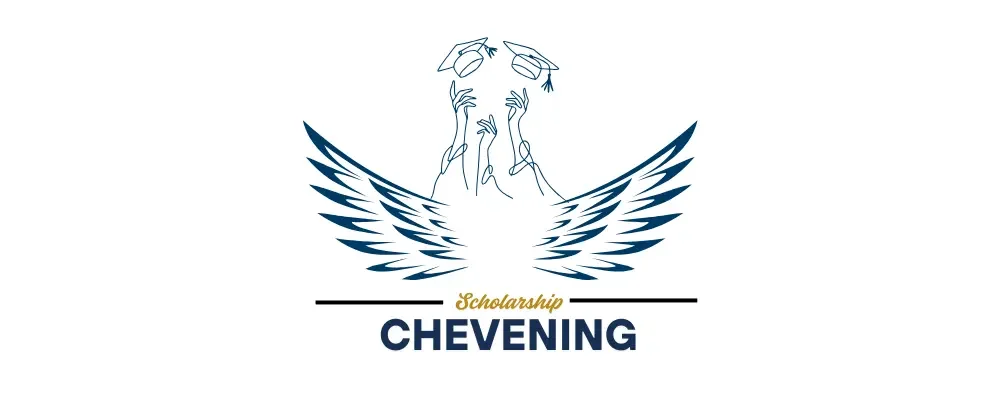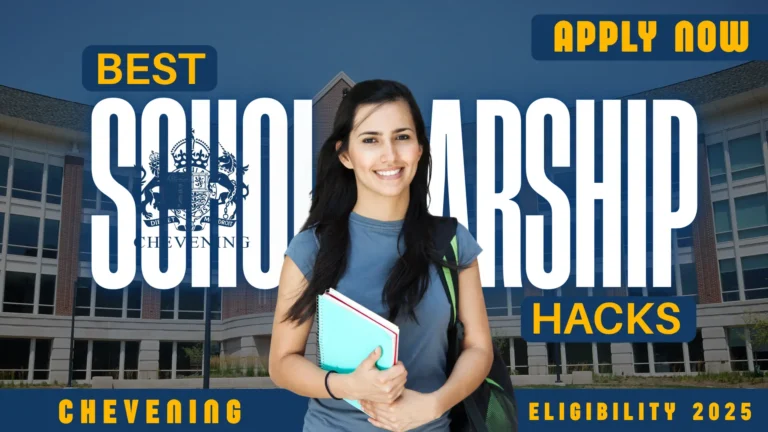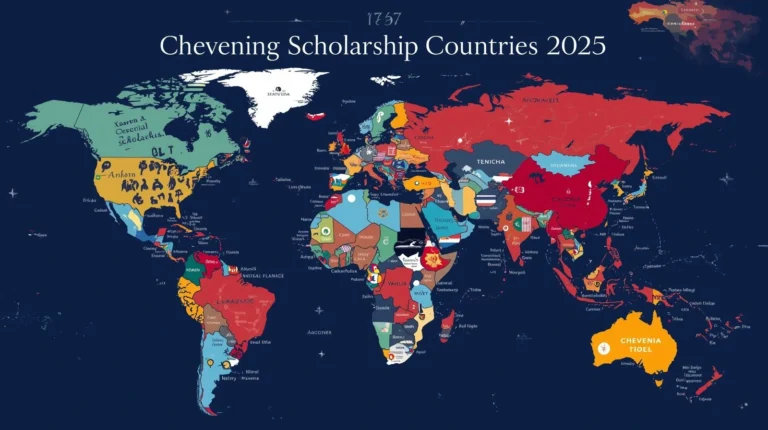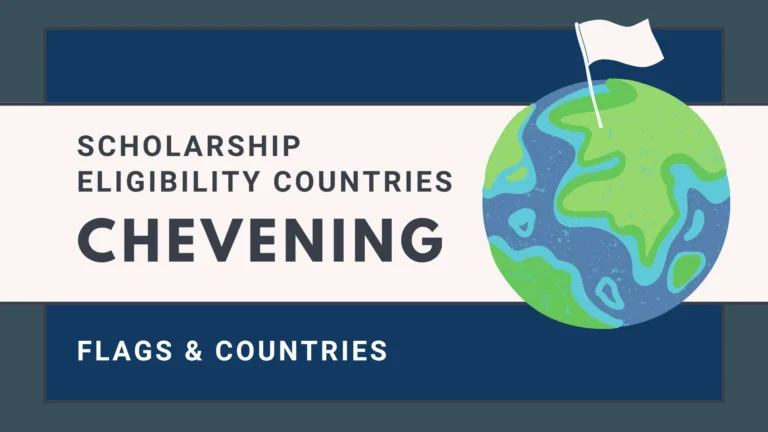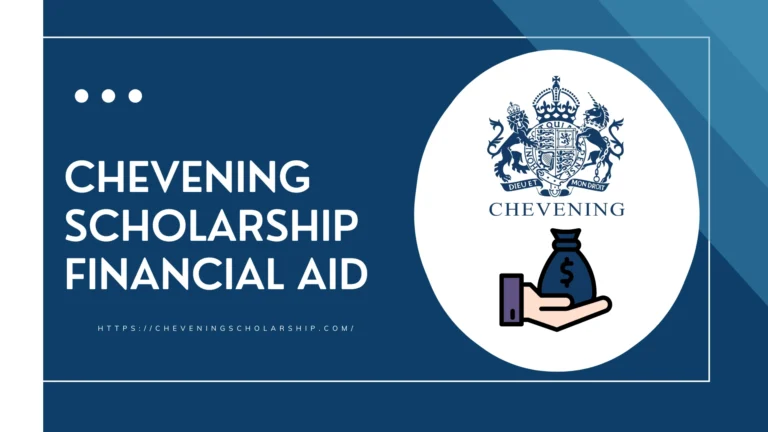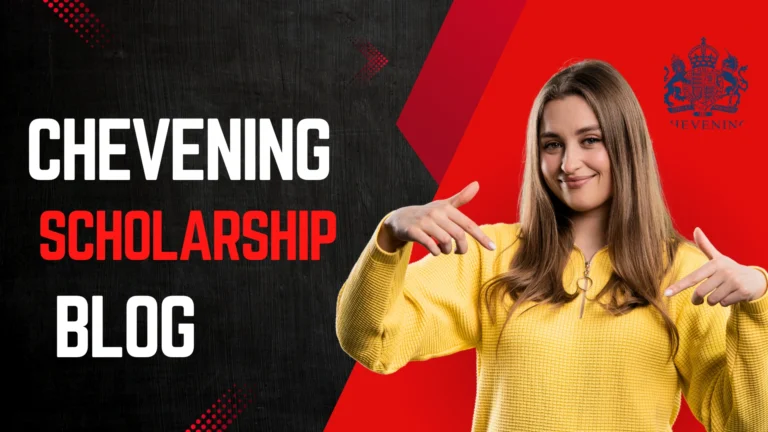Chevening Application Tips 2025: 15 Insider Secrets That Actually Work (From Someone Who’s Been There)
There I was, staring at a blank Word document at 2 AM, coffee going cold, deadline looming. The cursor blinked mockingly. “Describe a situation when you demonstrated leadership,” the prompt demanded. My mind? Totally blank.
Sound familiar?
Here’s what nobody tells you about the Chevening scholarship application: it’s less about having the perfect resume and more about knowing how to tell your story in a way that makes selection panels sit up and pay attention. I’ve seen candidates with incredible credentials get rejected, while others with less flashy backgrounds sail through to interviews and beyond.
The difference? They understood the game.
And that’s exactly what I’m about to share with you. Not generic “be yourself” advice (though that matters too), but actual, tactical Chevening application tips that separate accepted scholars from the disappointed masses. Consider this your insider’s guide—the conversation I wish someone had with me before I started my application.
Ready? Let’s get into it.
Understanding the Chevening Selection Process (And Why It Matters)
Before we dive into specific tips, you need to understand what you’re up against. The Chevening scholarship selection process isn’t just about checking boxes on eligibility criteria. It’s a multi-stage evaluation designed to identify future leaders who’ll return home and create genuine impact.
Here’s the brutal truth: roughly 70,000+ people apply annually for about 1,500-1,700 scholarships. That’s a success rate around 2-2.5%. Intimidating? Sure. Impossible? Absolutely not.
The selection process involves:
- Initial application screening (where most people get filtered out)
- Interview stage (the real test)
- Final selection and conditional offers
- University application verification
Each stage has specific criteria, and knowing what evaluators look for at each phase gives you a massive advantage.
The Foundation: Getting Your Eligibility Right
Let’s start with the basics, because I’ve seen too many brilliant people waste hours on applications they were never eligible for in the first place.
Chevening Scholarship Eligibility Criteria
The non-negotiables:
You must be a citizen of a Chevening-eligible country (check the official list—it changes occasionally). You must have at least two years of work experience (usually defined as 2,800 hours minimum). You must have an undergraduate degree that qualifies you for entry to a postgraduate program at a UK university.
Sounds simple, right? But here’s where people trip up:
Work experience interpretation: The Chevening scholarship requirements state 2,800 hours of work experience. That’s roughly two years full-time, but it can be accumulated through part-time work, internships, or volunteer positions. The key is documenting it properly.
Pro tip: Don’t include your undergraduate studies as work experience unless you were simultaneously employed. Academic projects don’t count, even if they were demanding.
The return home requirement: You must return to your country of citizenship for at least two years after your scholarship ends. This isn’t optional. If you’re planning to migrate permanently, Chevening isn’t for you.
| Requirement | What It Means | Common Mistakes |
|---|---|---|
| Citizenship | Citizen of eligible country | Permanent residents don’t qualify |
| Work Experience | 2,800+ hours over 2+ years | Including unpaid academic work |
| Education | Bachelor’s degree or equivalent | Not checking UK equivalency |
| Return Home | Must return for 2 years minimum | Unclear about this commitment |
| English Proficiency | Meet UK university standards | Assuming fluency is enough |
| No Previous UK Study | Haven’t already studied in UK on UK govt scholarship | Not disclosing prior scholarships |
Chevening Benefits and Coverage: Everything You’re Actually Getting (It’s More Than You Think)
The Four Essays: Where Dreams Are Made (or Broken)
Let’s get real—the essays are where your application lives or dies. You could have perfect grades and incredible experience, but if your essays are generic or poorly written, you’re done.
Essay 1: Leadership and Influence
This is the big one. The Chevening leadership essay tips could fill an entire article by themselves, but here’s what actually matters:
Don’t write about that time you were team captain in university.
Instead, focus on moments where you influenced change without formal authority. Did you mobilize your community to address a local issue? Did you change workplace policy through persistent advocacy? Did you mentor someone who went on to achieve something significant?
The formula that works:
- Context: What was the specific situation? (Be vivid—help them visualize it)
- Challenge: What made this difficult? (Real obstacles, not manufactured drama)
- Action: What did YOU specifically do? (Not your team—you)
- Impact: What changed measurably? (Quantify wherever possible)
- Learning: How did this shape your leadership philosophy? (This part separates good essays from great ones)
What NOT to do:
- Generic statements like “I inspired my team to excellence”
- Listing responsibilities instead of describing actions
- Taking credit for team achievements without clarifying your role
- Writing about situations with no measurable outcome
Essay 2: Networking
The Chevening network essay tips are straightforward: they want to know you can build and maintain professional relationships that lead to tangible outcomes.
Here’s the thing people miss—networking isn’t about collecting business cards or having a big LinkedIn following. It’s about creating value for others and building reciprocal relationships.
Strong networking examples include:
- Connecting two people who went on to collaborate successfully
- Building a professional community that solved a sector problem
- Maintaining relationships with former colleagues that led to opportunities
- Using networks to overcome obstacles in your work
The secret sauce: Show them you understand that networking is about giving, not just taking. The best essays demonstrate how you’ve helped others through your network, not just how your network helped you.
Chevening Networking Opportunities: Your Golden Ticket to Global Connections
Essay 3: Study in the UK
This essay tests whether you’ve actually researched UK universities and have legitimate academic reasons for studying there.
Chevening university application tips for this essay:
Be specific. Painfully specific. Don’t write “The UK has world-class universities.” Everyone knows that. Instead, write: “Professor Sarah Johnson at LSE specializes in climate finance policy in developing nations, which directly aligns with my work on Pakistan’s green bond market. Her 2023 paper on risk mitigation strategies for emerging economies addresses exactly the challenges I face in my current role.”
See the difference? You’re showing that you’ve done deep research, not just skimmed university websites.
What they’re really asking:
- Why UK instead of USA, Canada, or Australia?
- Why these specific universities?
- Why this particular program?
- How does this fit your career trajectory?
Address all four. Anything less feels incomplete.
Essay 4: Career Plan
The Chevening career plan tips essentially boil down to one thing: be realistic while being ambitious.
This is where people either write impossibly vague goals (“I will work to improve education in my country”) or absurdly specific ones (“I will become Minister of Education by 2030”).
The goldilocks zone: Describe a career path that’s ambitious but achievable, specific but flexible, impactful but grounded in reality.
A framework that works:
Short-term (immediately after returning, 0-2 years): “I will return to my role at [specific organization] with enhanced skills in [specific area], allowing me to lead [specific initiative] that addresses [specific problem].”
Medium-term (3-5 years): “Having demonstrated success with [specific initiative], I aim to take on leadership of [realistic next role] where I can scale impact to [specific scope].”
Long-term (10+ years): “My ultimate goal is to [specific outcome] that will [measurable impact]. Based on the trajectory of [similar examples in your sector], this is achievable through [realistic pathway].”
Notice how each stage builds logically on the previous one? That’s what evaluators want to see.
The Reference Letters: Your Secret Weapon
Most applicants treat Chevening scholarship recommendations as an afterthought. Huge mistake.
Your reference letters can elevate a good application to exceptional or drag down a strong candidate. Here’s how to get references that actually help:
Choosing the Right Referees
What Chevening wants:
- People who know your work intimately
- People who can speak to your leadership and potential
- Ideally, people with some standing in their field
What Chevening doesn’t care about:
- Big titles (unless that person actually knows you)
- Famous names who barely remember you
- Generic “to whom it may concern” letters
A manager who’s worked closely with you for three years and can provide specific examples of your leadership beats a minister who met you once at a conference.
Chevening Scholarship Countries: The Complete Global Guide for 2025
Helping Your Referees Help You
Here’s a somewhat controversial tip: make their job easy.
I’m not saying write the reference yourself (that’s unethical and usually obvious). But providing your referee with:
- Your CV
- Your essays (so they can complement, not repeat)
- Specific projects or achievements you hope they’ll mention
- The evaluation criteria Chevening uses
…ensures they write a stronger, more targeted letter.
The conversation to have: “I’m applying for Chevening, which focuses heavily on leadership potential and networking ability. Would you be comfortable writing a reference that speaks to [specific project] where I demonstrated these qualities? I’d be happy to provide materials to refresh your memory about my contributions.”
The Application Mistakes Everyone Makes (And How to Avoid Them)
Let’s talk about Chevening application mistakes that tank otherwise solid applications.
Mistake #1: Writing for Yourself Instead of the Reader
You know your story intimately. The selection panel doesn’t. What feels like sufficient context to you often leaves readers confused.
Fix: Have someone completely outside your field read your essays. If they’re confused about what you do, why it matters, or what you achieved, your writing needs work.
Mistake #2: Generic Essays That Could Apply to Any Scholarship
If you can replace “Chevening” with “Fulbright” or “Commonwealth” in your essays without changing anything else, you’ve failed.
Chevening specifically values networking, leadership, and the return home to create change. Your essays must explicitly address these priorities.
Fix: Use Chevening’s own language. If they emphasize “building networks,” use that exact phrase in your networking essay. If they want “future leaders,” explain your leadership philosophy explicitly.
Mistake #3: Trying to Sound Impressive Instead of Authentic
Nothing kills an application faster than pretentious language, inflated achievements, or trying to be someone you’re not.
Fix: Write like you talk (professionally, but naturally). If you wouldn’t use a word in conversation, don’t use it in your essay. Authenticity resonates.
Mistake #4: Ignoring the Word Limits
Each essay has a word limit. Going over by even 50 words suggests you can’t follow instructions—not a great look for someone seeking a prestigious scholarship.
Fix: Aim for 10% below the word limit. This gives you flexibility during editing and ensures you don’t accidentally exceed limits when making final tweaks.
Mistake #5: Last-Minute Application Submission
Beyond the obvious deadline risks, last-minute applications show. They’re usually poorly edited, lack coherence, and miss crucial details.
Fix: Aim to complete your first draft two months before deadline. This gives you time for revision, feedback, and unexpected life events.
| Mistake | Why It Hurts | How to Fix |
|---|---|---|
| Vague examples | Panel can’t evaluate claims | Use specific instances with numbers |
| Poor structure | Hard to follow your narrative | Follow STAR method: Situation, Task, Action, Result |
| Repeating CV | Wastes space, adds nothing new | Essays should expand on CV highlights |
| Ignoring word limits | Shows poor attention to detail | Stay 10% under limit |
| Generic language | Sounds like everyone else | Use specific details only you can provide |
| No proofreading | Typos undermine credibility | Read aloud, use Grammarly, get feedback |
The Chevening Interview: Turning Nerves into Your Advantage
You’ve made it past the initial screening—congratulations! Only about 20-30% of applicants reach the interview stage. Now comes the real test.
Chevening Interview Preparation: What Actually Works
The Chevening scholarship interview questions typically fall into predictable categories:
Your application essays: Expect them to dig deeper into every claim you made. If you wrote about leading a project, they might ask about challenges you faced, how you handled disagreements, what you’d do differently now.
Current affairs: They’ll test whether you’re informed about developments in your country and field. Not memorizing dates, but understanding trends and implications.
UK study plans: Why those universities? Why that course? How does it fill gaps in your current expertise?
Career plans: Is your plan realistic? How will your UK study enable it? What if things don’t go according to plan?
The Chevening return: How specifically will you apply your learning? What networks will you activate? What obstacles do you anticipate?
The Interview Strategies Nobody Tells You
Strategy #1: The pause is your friend
When asked a difficult question, it’s okay to pause for 3-5 seconds to collect your thoughts. This is infinitely better than rambling.
Try: “That’s an excellent question. Let me think about the best way to answer that…” Then pause, organize your thoughts, and respond.
Strategy #2: Ask for clarification if needed
If you don’t understand a question, ask them to rephrase it. It’s better than answering the wrong question.
Strategy #3: Connect answers back to your application
Your essays are your foundation. Whenever possible, reference points from your application: “As I mentioned in my leadership essay…” This shows consistency and reinforcement.
Strategy #4: Prepare your “difficult question” answers
Everyone has weaknesses in their application. Maybe your work experience is borderline. Maybe you’re changing sectors. Maybe your grades aren’t stellar.
Identify your vulnerabilities and prepare honest, strategic answers.

The Questions That Trip People Up
Let me share some Chevening scholarship interview tips for the questions that consistently challenge candidates:
“Why should we choose you over other candidates?”
Bad answer: “I’m passionate and hardworking.” Good answer: “I bring a unique combination of [specific skills] and [specific experience] that directly addresses [specific need in your country/sector]. My track record of [specific achievement] demonstrates I can execute on ambitious plans, not just dream about them.”
“What’s your backup plan if you don’t get Chevening?”
Bad answer: “I don’t have one—this is my only option.” Good answer: “I’m also exploring [alternative scholarship/self-funding option], though Chevening is my first choice because of [specific reasons]. Regardless of funding, I’m committed to pursuing this education because [specific reason].”
“How will you give back to Chevening and the UK?”
Bad answer: “I’ll be a good ambassador.” Good answer: “I plan to [specific action] that connects UK institutions with [specific need in home country]. For example, [concrete example]. Additionally, I’ll contribute to the Chevening alumni network by [specific role/contribution].”
Chevening Scholarship Eligibility 2025: The Complete Breakdown (Am I Qualified?)
The Application Checklist: Your Step-by-Step Guide
Let’s get tactical. Here’s your Chevening application checklist for ensuring nothing falls through the cracks:
Three Months Before Deadline
- [ ] Verify your eligibility thoroughly
- [ ] Calculate your work experience hours
- [ ] Identify three potential referees
- [ ] Research UK universities and specific programs
- [ ] Draft all four essays (rough versions)
- [ ] Gather required documents (transcripts, passport, etc.)
Two Months Before Deadline
- [ ] Revise essays based on self-review
- [ ] Share essays with trusted advisors for feedback
- [ ] Formally request references from chosen referees
- [ ] Finalize university choices (three institutions, three courses each)
- [ ] Ensure all documents are in correct format
One Month Before Deadline
- [ ] Incorporate feedback into final essay drafts
- [ ] Proofread everything multiple times
- [ ] Confirm referees have submitted their letters
- [ ] Complete all sections of online application
- [ ] Save backup copies of everything
Two Weeks Before Deadline
- [ ] Final review of entire application
- [ ] Check that all sections are complete
- [ ] Verify referee submissions
- [ ] Screenshot completed application for records
- [ ] Submit application (yes, two weeks early)
The Essay Revision Process That Actually Improves Your Writing
Most people think revision means fixing typos. Wrong. Revision is where good essays become great.
Here are my Chevening essay revision tips:
Round 1: The Brutal Self-Edit
Read your essay aloud. Seriously. If something sounds awkward or unclear when spoken, it needs work.
Ask yourself:
- Does every sentence add value?
- Am I being specific or generic?
- Would someone outside my field understand this?
- Does this answer the question being asked?
Cut ruthlessly. Your first draft is probably 20-30% too long and trying to say too much.
Round 2: The Peer Review
Find someone successful (ideally someone who’s won a competitive scholarship or writes professionally) to review your essays. Not your mom. Not your best friend. Someone who’ll give honest feedback.
Questions for reviewers:
- What’s the main point of this essay?
- Which parts confused you?
- Where did you lose interest?
- What specific details stood out?
Round 3: The Professional Polish
This is where you check grammar, consistency, formatting, and flow. Tools like Grammarly help, but nothing beats a human proofreader.
| Revision Stage | Focus Area | Key Questions | Timeline |
|---|---|---|---|
| Self-Edit | Content & structure | Does this answer the question? | Week 1 |
| Peer Review | Clarity & impact | Does this make sense to outsiders? | Week 2 |
| Expert Review | Strategy & positioning | Does this align with Chevening values? | Week 3 |
| Final Polish | Grammar & formatting | Is this error-free? | Week 4 |
The Chevening Scholarship Application FAQs
Let me address the Chevening scholarship application FAQs I hear constantly:
Q: Can I apply if I’m currently studying abroad? A: Yes, as long as you meet all other eligibility criteria and can return to your home country after the scholarship ends.
Q: Do I need to have university offers before applying? A: No. You apply for Chevening first, then apply to universities after receiving a conditional scholarship offer.
Q: Can I use the same referee for multiple scholarship applications? A: Yes, though ensure they’re willing to write multiple letters and tailor each to the specific scholarship.
Q: Is there a preferred age range for applicants? A: No age limit beyond meeting the work experience requirement, but most successful candidates are in their late 20s to early 40s.
Q: Can I defer my scholarship if I win? A: Generally no. If you win for the 2025/26 cycle, you must start in 2025. You can apply again in future if circumstances change.
Q: Does my undergraduate GPA matter? A: It matters for university admissions, but Chevening focuses more on work experience, leadership potential, and essay quality.
The Mental Game: Staying Motivated Through the Process
Let’s talk about something nobody addresses: the emotional rollercoaster of applying for Chevening.
This process is long (12+ months from application to arriving in UK), stressful (multiple high-stakes deadlines), and uncertain (you’re competing against thousands). You need mental strategies to stay focused.
Strategy 1: Break it into sprints
Don’t think about the entire process. Focus on the next immediate task. Finished drafting essay one? Celebrate that win. Don’t immediately stress about essays two through four.
Strategy 2: Build a support network
Join online communities of Chevening applicants. Share stress, strategies, and encouragement. Knowing others are in the same boat helps enormously.
Strategy 3: Prepare for rejection
Here’s the hard truth: most applicants get rejected. It’s a numbers game. Prepare yourself emotionally for that possibility while still giving your best effort.
If you don’t win this year, it’s not a reflection of your worth. Many successful scholars won on their second or third attempt. Each application makes you stronger for the next.
Final Wisdom: What Actually Matters
After all these tips and strategies, let’s zoom out for a moment.
The selection panel isn’t looking for perfect people. They’re looking for genuine people with authentic drive to create change. They want to see your real self—your struggles, your growth, your specific vision for impact.
The strongest applications I’ve seen share common traits:
- Authenticity: They sound like real humans, not corporate brochures
- Specificity: They provide concrete examples, not vague claims
- Vision: They articulate clear but flexible plans for impact
- Self-awareness: They acknowledge challenges and demonstrate learning
- Coherence: Everything connects—CV, essays, career plan, interview answers
Your job isn’t to become someone else. It’s to present your genuine self in the most compelling, strategic way possible.
Your Action Plan Starts Right Now
Enough reading. Time for action.
In the next 24 hours:
- Verify your eligibility using the official Chevening criteria
- Calculate your exact work experience hours
- Identify three potential referees and their contact information
- Create a dedicated folder for all Chevening materials
- Set up a timeline working backward from the deadline
In the next week:
- Research and shortlist 5-10 UK universities and specific programs
- Draft rough outlines for all four essays
- Reach out to potential referees (yes, this early)
- Join online Chevening applicant communities
- Schedule regular work sessions (2-3 hours weekly) until submission
In the next month:
- Complete first drafts of all essays
- Share drafts with trusted reviewers
- Gather all required documents
- Begin revising based on feedback
- Set your personal submission deadline (at least 1 week before official deadline)
The Real Secret: There Is No Secret
Here’s what I wish someone had told me at the start: there’s no magic formula that guarantees success. The Chevening scholarship application guide you need is simpler than you think.
Do the work. Start early. Be genuine. Write clearly. Revise thoroughly. Show up authentically.
The difference between applicants who succeed and those who don’t usually comes down to preparation, attention to detail, and the courage to put their real selves on the page.
You’ve got this. The fact that you’ve read this far proves you’re serious about the opportunity. Now go turn that seriousness into a scholarship.
Your future self—the one studying in the UK, building a global network, and preparing to create the change you want to see—is counting on you to put in the work today.
So close this article. Open that Word document. And start writing your story.
A Final Note: The Chevening application process evolves slightly each year. Always check the official Chevening website for the most current requirements, deadlines, and guidelines. This guide provides strategic advice, but official sources have the final word on technical requirements.
